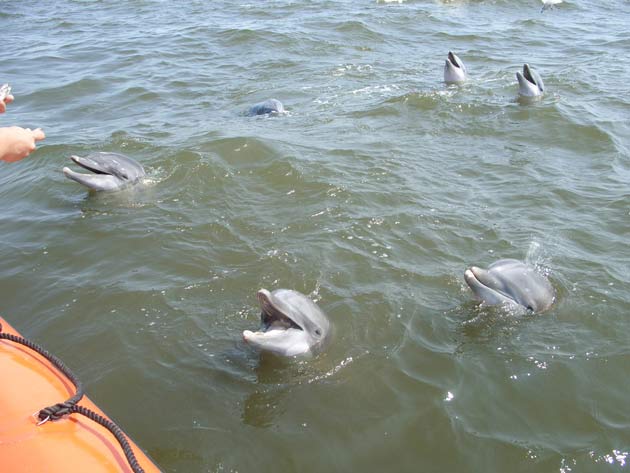Dolphins Name Themselves

A high-pitched "wee-o-wee-o-wee-o-wee" whistle might not sound like much to you, but it's exactly how a dolphin might introduce itself.
Because sight is limited in the ocean, dolphins create individual "name" calls to communicate their whereabouts to friends and families.
But it's not as simple as just recognizing a voice, as with most animals. A new study reveals that the calls contain frequency changes that dolphins recognize.
Digital dolphins
Humans are one of the few animals that use sound modulation instead of simple voice differences to identify individuals. For example, a person can recognize the name "John" whether it's being said by Gilbert Gottfried or James Earl Jones.
Scientists have long known that dolphins identify themselves with names, but the belief was that, like some monkeys, the animal's voice was the key ingredient of the call.
A team of researchers led by Vincent Janik of the University of St. Andrews in Scotland temporarily captured seven male and seven female bottlenose dolphins in Sarasota Bay in Florida. Janik and his crew recorded the name calls of each dolphin, and digitally removed the voice features of each call.
Sign up for the Live Science daily newsletter now
Get the world’s most fascinating discoveries delivered straight to your inbox.
They then played the computerized calls and digital versions of other random calls through underwater speakers where the dolphins were held.
In nine of 14 cases, the dolphin would turn more often toward the speaker—an established technique for gauging a dolphin's interest—if it heard a whistle resembling the name of a close relative.
"Every dolphin has its own voice," Janik told LiveScience. "But we removed those features and showed that the animals are actually paying attention to the modulation and not the voice."
Naming game
A dolphin chooses its own name as an infant and uses it throughout its life.
"It seems like the animals hear what's around them, and then they make up their own whistle," Janik said. "They either develop something original ... or they base it on parts of the whistles around them."
Regardless of the method, the young dolphins want to make their call stand apart from the calls of their closest relatives. Communicating by sight is difficult underwater, so dolphins use these calls to let other dolphins know they're nearby. A dolphin will also call out its name if it's lost and distressed, hoping relatives will come to its aid.
Dolphins are some of the most talkative animals around, even though we don't know what they're saying.
"Their repertoire of calls probably numbers in the hundreds," Janik said. "Some of them are food calls, but for most of them we have no ideas what they're for."
The study is detailed in this week's early online edition of the journal Proceedings of the National Academy of Sciences.
- No Joke: Animals Laugh, Too
- Language of Prairie Dogs Includes Words for Humans
- Armed Dolphins Said Set Loose in Gulf by Katrina
- Whale-Dolphin Hybrid Has Baby 'Wholphin'
- How Dolphins Spin, and Why










